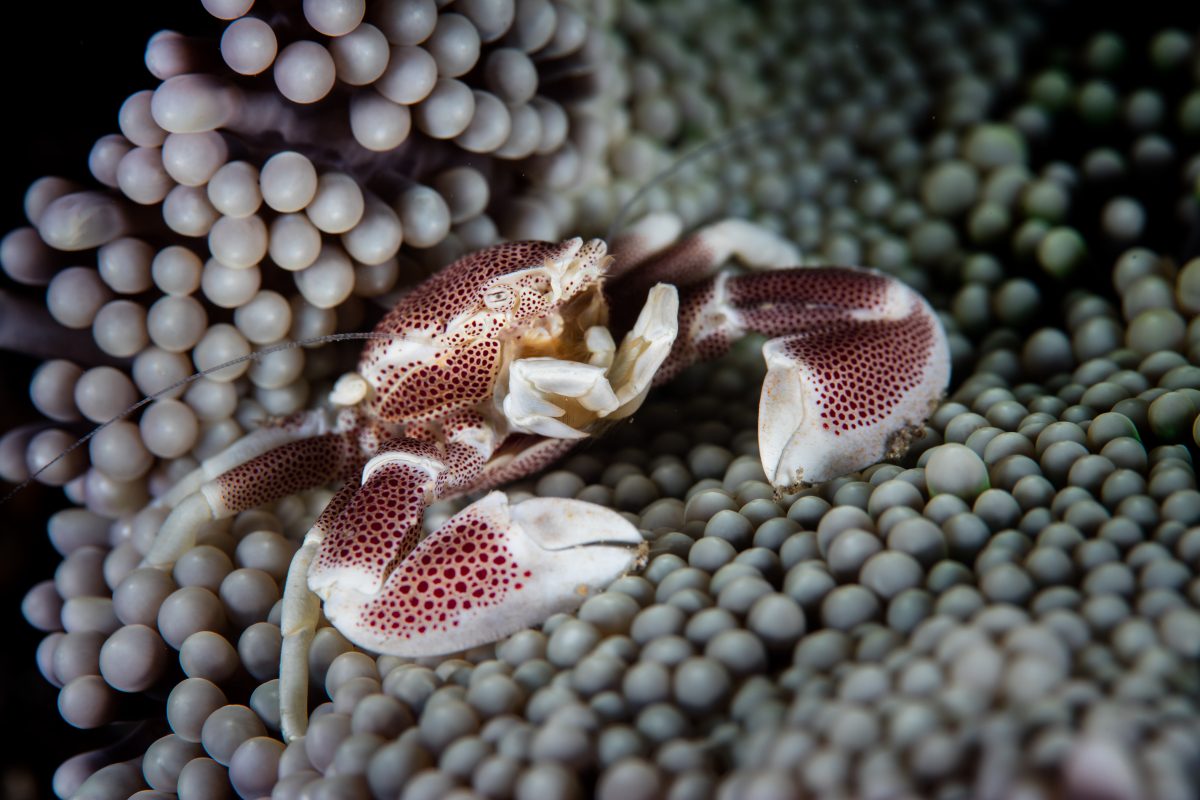You may have heard of the iconic duos Sherlock & Watson, Bonnie & Clyde or Batman and Robin. But have you ever heard about the dynamic duos found throughout our ocean? Many marine species have formed unlikely partnerships that provide a range of benefits including protection, food provision, public transportation and even dental hygiene. These relationships, although unlikely, can often last a lifetime.
Pistol Shrimps and Gobies
Knowing your strengths and weaknesses is critical if you want to be part of a successful team. This is certainly true for both the goby and pistol shrimp in their mutually beneficial friendship. The nearly blind shrimp is the builder, using its construction skills to maintain and build a burrow that both animals can call home. The goby is the protector and watchman, using its superior eyesight to guard the burrow and warn the shrimp of potential predators. These roommates have a unique warning method, whereby the shrimp maintains constant contact with the goby’s tail through its antennas and the goby signals a warning through a flick of its tail. This highly evolved and elaborate partnership will likely last a lifetime.
Eels and Groupers
The partnership between a moray eel and grouper showcases the rare phenomenon of cooperative hunting amongst different species. These two fish cooperate in a hunting strategy in order to flush out and catch their prey. The moray’s body shape allows for it to flush out prey in cracks and holes, whilst the grouper can use its speed and agility to catch prey in open water. The partnership is usually initiated by a vigorous shimmy movement from the grouper, a signal for the moray to join the hunt. When these two fish combine their forces, their prey do not stand much chance.
Crabs and Sea Anemones
Although this friendship is initially based on unrequited love, with hermit crabs picking up young sea anemones and attaching them to their shells, it quickly develops into a lifelong partnership. Even when hermit crabs outgrow their shell, the resident sea anemone often also opts to move to a new house with their crab. In this loyal friendship, the sea anemone offers vital protection to the crab by extending long stinging tentacles over the hermit crab to deter predatory fish. In turn, as the crab moves around, the anemone takes advantage of its mobile home through exposure to many feeding opportunities and easier access to food.
Cleaner Shrimps and Moray Eels
One of the most trusting and intimate relationships on a coral reef is the bond between a cleaner shrimp and a moray eel. Although, moray eels are renowned as fierce predators in the sea, cleaner shrimps fearlessly enter the eel’s mouth and throat, ensuring thorough cleaning for their client. Cleaner shrimp are awarded this protection as they remove parasites, dead scales and bits of food from the eel’s mouth, reducing the chance of infection and disease. In turn, these brave cleaner shrimps get a free meal and a regular customer at their cleaning station. Cleaner shrimp are not the only marine species working at this underwater spa, other cleaners include the cleaner wrasse, a small cleaner fish who diligently cleans fish, sharks and sea turtles.
Sea Cucumbers and Emperor Shrimps
Emperor shrimp are well known coral reef “hitchhikers”. They typically catch a ride with slow moving species such as sea cucumbers or Nudibranchs. Whilst on their underwater vehicle, emperor shrimp can take advantage of plentiful feeding opportunities and the sanctuary provided away from predators. Whether this relationship benefits the sea cucumber is disputed, with evidence suggesting that emperor shrimp may provide cleaning services, like cleaner shrimps, to the sea cucumber. Whether this can be called a friendship is debatable, but you must admire the savviness of this smart little shrimp catching rides across the Indo-Pacific.
The Human Element
Wherever you look in nature, extraordinary mutually beneficial partnerships and relationships can be found. Throughout our ocean, marine species, with very little in common, have harnessed their differences to form a successful and functional partnership, mitigating harm and providing rich benefits to each other. Perhaps now is the time to reflect upon our relationship with our ocean and each other. Lets ask ourselves, are we benefiting or causing the least amount of harm to the marine species that we steward? Finally, I hope we can be inspired by the incredible species in this article to always harness and celebrate the power of diversity and collaboration.
